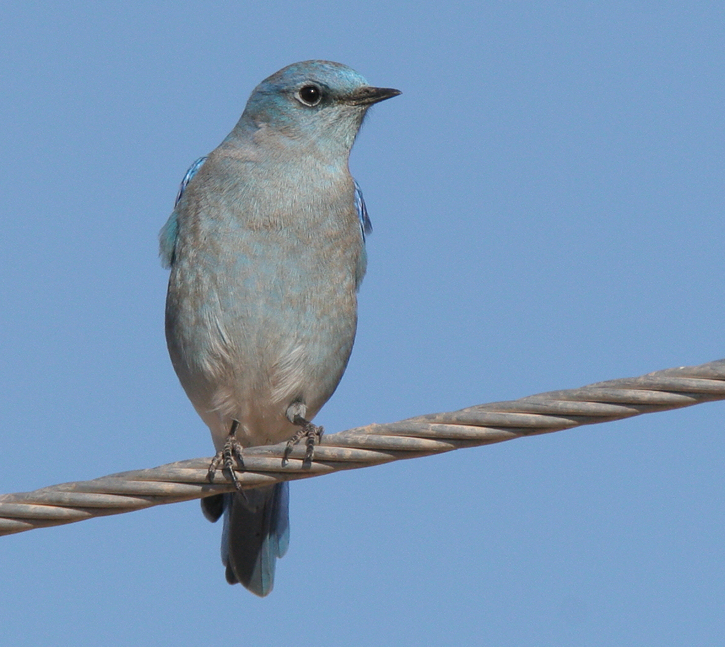
Location: Bosque Del Apache, Socorro, NM
Date: 2006-11-21
Lens: Canon 600mm IS F4 + 1.4x II Converter

 Mountain Bluebird
Sialia currucoides
Mountain Bluebird
Sialia currucoides
 Description
DescriptionMountain Bluebirds primarily feed on a variety of insects, including beetles, ants, wasps, grasshoppers, and crickets. Berries are consumed in lesser quantities. Mountain Bluebirds differ from other bluebirds in that they hover while foraging. This bird is attracted to fire burned areas, where there is great potential for nesting cavities in standing dead trees, especially trees that contain woodpecker holes. This bird migrates in small flocks that stops frequently to feed.
General: 7 inches in length.
Male: Bright sky-blue upperparts. Paler blue underparts. Whitish abdomen. Black bill and legs.
Female: Dull blue upperparts. Gray underparts. Black bill and legs.
Juvenile: Similar to female, but with spotted underparts.
Grasslands, meadows, sagebrush desert, and open pine areas at mid to high elevations.
 Nesting
Nesting5-6 pale blue eggs. The eggs have a 13-14 day incubation period. Fledging occurs in 22-23 days. The nest is made from grass and plant fibers and built in a natural cavity or bird box. Only the female builds the nest. While the male may occasionally bring nesting material to the cavity, he generally spends his time guarding his mate. Mountain Bluebirds are solitary nesters. The male usually arrives at the breeding site first and selects the nesting cavity. To attract a mate when the females arrive, the male flies in and out of his cavity while calling.